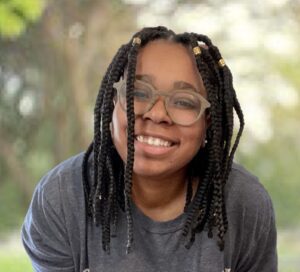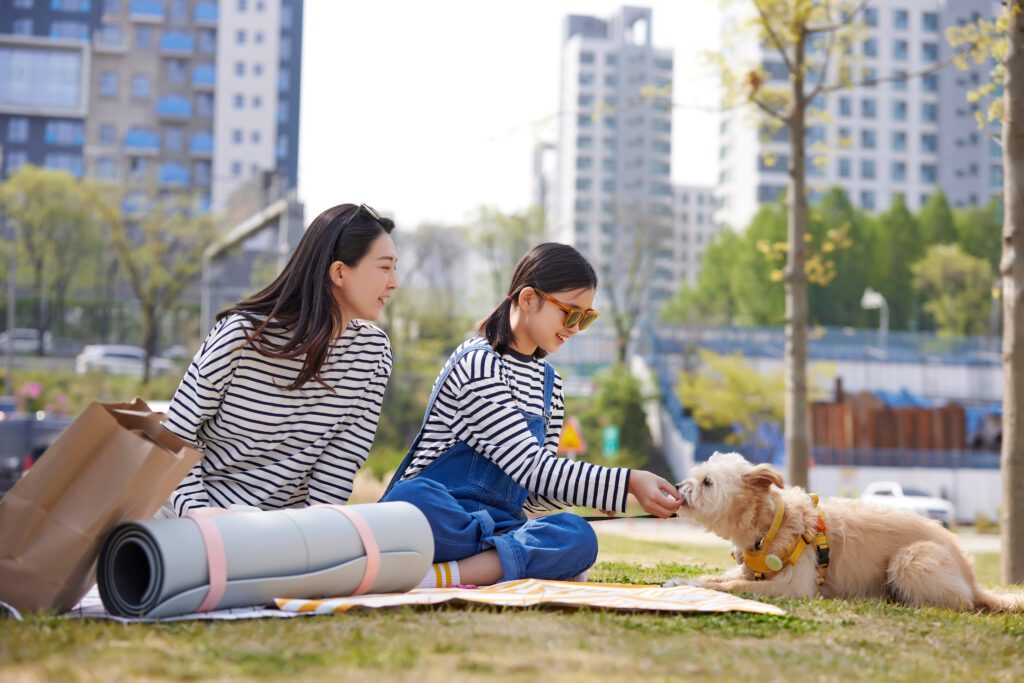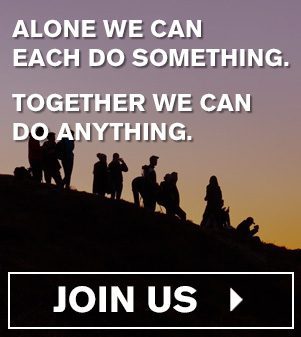Q&A with Rachel Felder, a naturalist at the City of Detroit Parks and Recreation Department
The Outdoor Foundation’s Thrive Outside Initiative is a national network of partners working to create a more inclusive and accessible outdoor experience for all. In this Impact Stories series, we talk to local Thrive Outside leaders to learn more about their community and their vision for the future.
For a prime example of how powerful collective impact can be, Thrive Outside Detroit is a community-led network involving organizations from local, city, state, and national levels—and has already directly led to events engaging hundreds of youth in nature-based activities.
We asked Rachel Felder, a naturalist with the City of Detroit Parks and Recreation Department, about the coalition’s programming, goals, and efforts to redefine the way people see the “outdoors.”

What kind of programming are you doing through Thrive Outside?
We have nature programming throughout the city and do a lot of work focusing on bridging the gap between nature and people. Recently, we had a three-day event to celebrate National Thrive Outside Day with the Canoemobile from Wilderness Inquiry in Minnesota. We collaborated with a lot of different partners, including the Detroit Riverfront Conservancy, the U.S. Forest Service, the Belle Isle Nature Center, the U.S. Fish & Wildlife Service, and the Detroit Public Schools Community District. We were able to get probably 200 youth out paddling on the Detroit River and learning about the environment surrounding it. It was a really great opportunity to uplift and amplify what the goals of Thrive Outside are. These three days came out of multiple meetings with community partners and getting together to figure out how to have an opportunity like this for youth within the city.
How do you define the “outdoors” in an urban environment like Detroit?
We’re really trying to emphasize that there’s no wrong way to be outside, as long as you’re respecting the Earth and the people around you and you’re being safe. It doesn’t have to be this extensive experience, if you don’t want it to be. Some of us don’t necessarily feel comfortable or are not used to doing certain activities outside, and outside isn’t something that’s normalized for us. So it just starts out with talking with people.
We have a lot of pocket parks, actually. We’re working on a grant from the National Parks & Recreation Association, through the City of Detroit Parks and Rec Department, to create seven new pocket parks. We’re working with community leaders in seven districts to figure out what they want and need in their communities, and help them build it.
There are so many ways to exist in nature, and nature itself is not going to judge you for the way you want to interact with it. In every experience, we’re trying to bring people to nature, and we’re also trying to bring nature to people.
What are some ways we can make the outdoors more inclusive and accessible?
Nature is a human right, so to speak. It’s important to be talking about all of these things with people and encouraging them to utilize the natural spaces they have in their area, and just to sit outside is a great thing to do. We try to encourage them, like, “Hey, try to do some of the activities you do inside, outside.” Like reading a book, or drawing a picture, or having a simple conversation. Sometimes, shifting things outside can shift the entire dynamic of what’s being done, like having a meeting outside versus inside can be transformational.
How are you finding and engaging people to interact with your programming?
There’s a mix of us doing outreach, and people seeking and finding us. We interact with a lot of people through our social media accounts. That is where we promote many of our events. But we find that a lot of people find out about us through word of mouth. We really try to engage with many organizations within the city of Detroit to spread the word that there are opportunities to get youth and adults of color outside and camping. We have camping leadership trainings for all experience levels. Once you’ve done the training, you have access to our gear library.
One of the reasons the Thrive Outside initiative is so cool and important to us is because we love partnership. One of my colleagues likes to say that there’s so much knowledge held within people, so through working with different organizations, through working with different people, it’s really cool and powerful to be able to meet people who want to do things with us and reach out and collaborate.
How does the collective impact model relate to the work you’re doing?
The collective impact allows for organizations to come together and figure out how to collaborate. Like, you’re having this program; how can we uplift it? It’s beautiful. It brings so many people into a space to have conversations that aren’t stagnant—they’re active conversations that result in plans and partnerships and long-term relationships. We’re already collaborating on a daily basis with other organizations, like Detroit Parks and Recreation employees, YMCA employees, and Sierra Club employees — and that’s just within our Detroit Outdoors collaborative. A lot of our missions align—at the end of the day, we want to get people outside, so let’s figure out how to do it together.
Having national partners, state-level partners, city-level partners, and people on the ground in grassroots organizations, all at the same table, is something unbelievable. Seeing the engagement that comes out of these conversations and the work that Thrive is uplifting is very powerful.
How have the outdoors been impactful to you in your own life?
Detroit Outdoors took me on my first camping trip when I was 16. It’s a really full-circle experience to be taking youth even younger than me on their first camping trips, and sharing those experiences with them and knowing some of the emotions they’re having. It’s great to see their faces when they see the stars at night, or when they see a deer that they don’t expect to see. Nature is somewhere that I find a lot of peace.
What does success look like? What do you want to see Detroit achieve through Thrive Outside and beyond?
It starts with knowing what people want to do. Our gear library has been a game changer in many ways because it’s allowed us to really bridge that gap. If we’re talking about 5, 10 or even 50 years down the line, I’d like to see so many gear libraries in recreation centers and community hubs throughout the city of Detroit. If people want to go camping or skiing or canoeing, they’ll have the ability to access a gear rental system where people are keeping equipment in great condition because they know other people are using it, too.
We have a lot of vacant lots in Detroit and I think there’s a lot of potential there, as well, to make use of what we have. Some people have installed shipping containers to create useful, recreational spaces in empty lots. We ask a lot of questions about how we can give people infrastructure and resources to utilize the spaces that they have. I’d love to see more of this—maybe shipping containers with access to laundry facilities or clothes libraries so people can have gear in the winter. I’d like to see hubs for nature programming, living trailers or tiny houses where people can borrow binoculars and access passive programming in the outdoors. I want to see more free libraries and creative reading nooks with ample lighting, just creating spaces to make people want to go outside and not have to question themselves. I want it to be accessible: all body types, all learning and physical abilities. I want to see people interacting with parks in so many different ways, whether it’s reading a book or doing ecology work or citizen science, or going camping. I just want people to feel comfortable going outside and to know that they have a right to be there.





